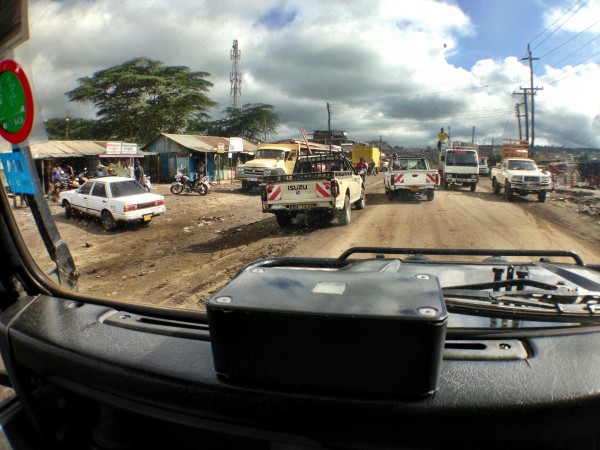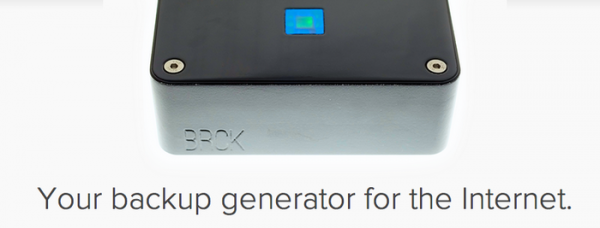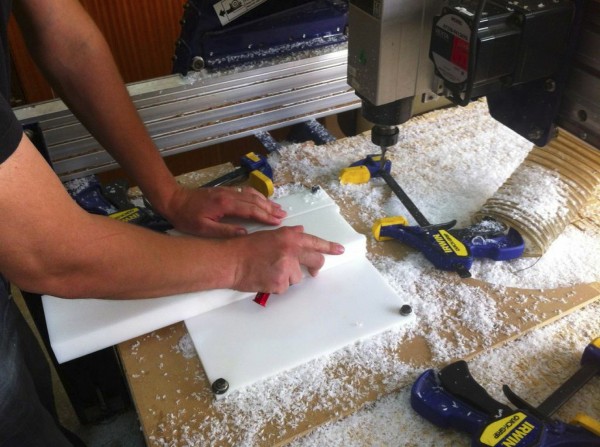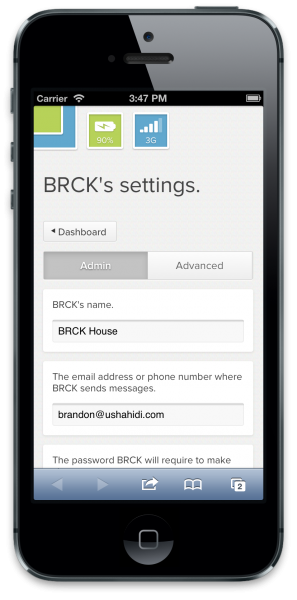Why do we rely on equipment made for the Berlin, Orlando and Tokyo when the conditions we have in Nairobi, Lagos or New Delhi are completely different?
Today we’re announcing the BRCK: The easiest, most reliable way to connect to the internet, anywhere in the world, even when you don’t have electricity.
We have a BRCK Kickstarter going, where we’re asking for your on taking it from prototype to production.
The BRCK is a simple, and it came from us asking:
“How would we design a redundant internet device for Africa?”
It would need to do the following:
- A router for 20 people
- With 8+ hours of battery for when the power goes out
- That fails over to 3g when the Internet goes out
- That travels, so you become a mobile hotspot
- With cloud-based backend that supports every country
- On device with both a software and hardware API
As a web company, being connected to the internet when you need it is a big deal, small outages cause lag that ripple through the organization. Even in Nairobi with it’s 4 undersea cables and growing tech scene, we still have power and connectivity problems. Could we do something to scratch this itch of ours that would help others too?
Since we travel a lot, we decided that it needed to work in every country. The BRCK had to work when the power was off for a full day (8 hours), had to fail over to 3g internet when the ethernet didn’t work, it also had to work in any country we were in, by just changing the SIM card. At the same time we wanted it to be accessible for both software and hardware extensions by others.
Having a BRCK cloud means that you can login to your device from anywhere in the world, load apps and services on to it, such as a VPN, Dropbox or other services and also control sensors and other devices connected to the hardware. We think that the BRCK model of both a software and hardware API represents the glue that will make the internet of things work.
As Ushahidi we’ve always used simple technology to create tools and platforms that work for us in Africa, and which is also useful globally. This holds true for the BRCK too. We’re redesigning technology that’s been around for years, but making it work for our needs in Kenya.
Some History
A year ago I jumped on a plane from South Africa back to Kenya without my book and my phone battery almost dead. Funny enough, these happenstances which leave me bored and with nothing to do but think have lead to my most interesting ideas (I’m sure there’s a lesson in there somewhere…). I subsequently broke out my notebook and started sketching out what I thought would be a fun hardware side-project for Ushahidi’s core team that would give us something to work on, when we were too fatigued with the normal coding/work.
We live in possibly the most interesting time for technology in history, where we’ve created this incredible thing called the internet, connecting us globally while at the same time getting to the point where the people who can code software can also “do” hardware. An era where analog and digital are democratized and the making of both attainable by anyone with a computer.
Making things is hard. It’s harder in Africa. I can’t overnight an order of processors, boards or 3d printing filament here. There aren’t an over abundance of local fabrication facilities or tools, and the milling machine you find might be in disrepair and take you two days to calibrate. We’ve got our work cut out to create the right spaces for prototyping and small-scale fabrication on the continent.
We actually started with Jon Shuler doing a lot of the early builds being done by him at his home in California. I’d bring these builds back to Brian Muita and team in Kenya where he was hacking on the firmware to make the system work. All the while hoping that air travel security would let me through with what to all appearances looked like a remote detonation device…
By prototype version 5 we were in Nairobi with a bunch of plastic, using the University of Nairobi’s FabLab to mill the body. There was a fair bit of repair and adjustment needed on the machines to make it work. Like most things in Africa, you either fix what you have or you don’t do it, because there isn’t another option. After a couple days we got it within close enough allowances that we could do it. It still wasn’t pretty, but we knew it would work by then.
That was all just the hardware bit. Concurrently we wireframed the software side, ensuring that this device was much more useful than just a MiFi on steroids. The BRCK Cloud falls directly in Ushahidi’s software development wheelhouse, so we set about creating a simple responsive interface that would work on both phones and big screens.
The software side does three things:
- A simple setup interface with only 3 form fields. Router setup is scary and hard, so we’re trying to take the pain out of it.
- A dashboard, so you can see if your BRCK is running on backup or primary power, how fast your current internet connection is, your provider, and how all of these have done over the last hour, day, week and month.
- A marketplace for free apps and services, as well as the place for others to offer up their own creations to the rest of the BRCK users around the world.
While having a device that was remotely programmable and that could run its own apps and service is important, we realized this was only half of the equation. We would need to create a similar interface for hardware creators and users. This means we needed the device to have hardware ports for everything to connect to, from temperature sensors to Raspberry Pi’s (as an aside, I want to get a Raspberry Pi hooked into the BRCK, thereby making a small, working server). We also decided to put special hex nuts at the top that would allow you to pop the top and get into the guts easily to do your own re-jigging.
The plan for the future is that you’ll be able to stack components under the BRCK like Legos, so that if you need an additional battery pack, a temperature sensor, solar charger, or other product you could do so with ease.
For a full rundown of the all that the BRCK can do, check out the Kickstarter. If you want to get into the real details, see the spec sheet.
Final Thoughts
This week I’m in Berlin to speak at re:publica – and as this post goes live I’m finalizing my talk. I find myself driven to tell the story of Africa’s great potential and growth, tempered by my experience building companies, communities and products here. I see the other entrepreneurs, hungry to create new products and driven by the same powers that are seen in their European and American counterparts. Here, it’s a harder road to hoe in many ways, it takes more grit, more determination and more belief in a future that is not yet realized to do it.
I look at the success we’ve had as Ushahidi and what this new hardware product means to us, and I’m humbled that we have the luxury to self-fund the R&D to get it to this stage, while so many my peers are struggling to take great concepts to even the prototype stage. The opportunities afforded us by our international awareness, the advantage of attracting and hand-picking the top talent that come through the iHub, the ability to have funds that we can risk on a half-baked original idea, a Board who believes in us and trusts our decisions – these are what I’m grateful for.
For this same reason, we’re committed to making a difference for our friends and peers in Nairobi. We’re going to build a makerspace through the iHub that allows others to start from a better position. A place that will give hardware hackers and entrepreneurs a chance to get trained on tools and machines, meet their peers and take risks on their own crazy half-baked hardware ideas. We’re calling this Gearbox.
We’re looking for corporate, academic and other partners right now to make it a reality. I’ll write about it more at another time (as this post is already too long). However, if you’re interested in being a part of this initiative, do let me know.





May 6, 2013 at 11:41 am
WOW, great idea. I will indeed invest.
May 7, 2013 at 3:54 pm
Sound like an excellent idea. I am only small fry but I too would like to invest.
Best of luck
May 7, 2013 at 4:34 am
How is this different from DLink’s shareport go?
May 15, 2013 at 4:01 am
Hi Bill,
The BRCK differs for a couple different reasons:
First, the 3g connectivity is built in, you don’t need to add a 3g modem/dongle to it via USB. It’s built to automatically failover to 3g from the ethernet port as well.
Second, it has an 8-hour battery life and provides up to 20 simultaneous connections.
Third, you can plug any sensors or other hardware into the BRCK and control them via the cloud backend.
Hope that helps.
May 11, 2013 at 8:30 am
Erik! What a great idea! Will it really work?
If so, I knowevery safari guide and every remote safari camp will buy one!!!
Ryan
May 15, 2013 at 3:52 am
Hey Ryan, yes this works. We’ve been using them as we go through the prototyping stages, so we know they do.
I’m guessing that this will be a great device for people living out in the bush. The main thing is that they still need access to at least a mobile phone tower to get that data signal.
May 14, 2013 at 3:18 am
Your first statement about the most interesting ideas appearing _without_ internet access (i.e. distractions!) attracted further reading! 🙂
So if my understanding is correct, this “brick” is a lead-acid battery powered wireless router that uses a mobile phone SIM card for communication?
My first thought on seeing in the car: is there an input for micro-solar PV? Or, possibility to use a dynamo, (as used for old bicycle lights) as a mechanical source of electricity?
Look forward to further posts, thanks.
May 15, 2013 at 3:54 am
Hello “r” from Capetown. You’re basically correct on how the BRCK is setup/works. It’s a simple device, not any really new technology in it, just a new way that it’s being packaged so that it works for us here.
There is a USB power input, so you can charge via car, solar, whatever you like.